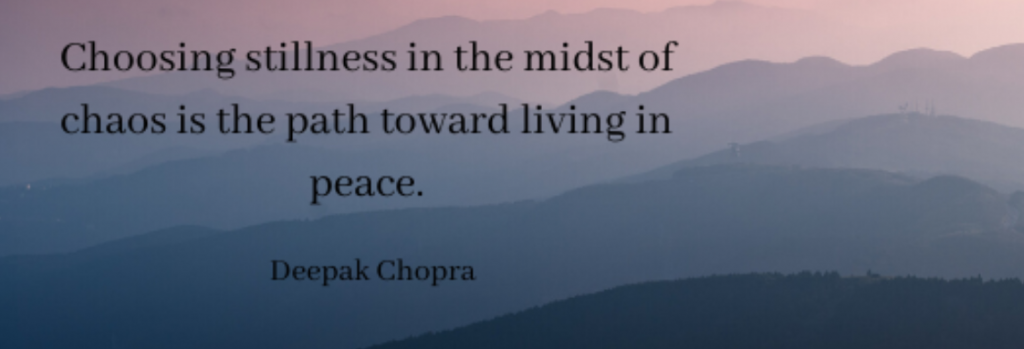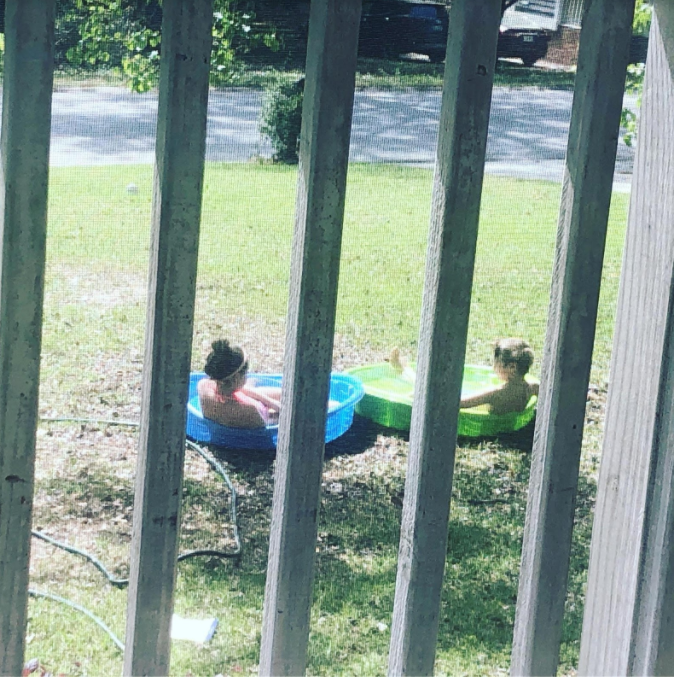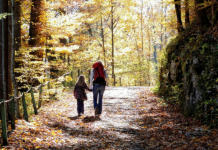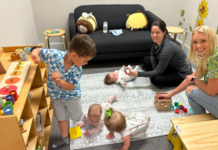
Last week I was sitting on my screened-porch with my laptop in front of me, looking at the faces of my colleagues — the middle school faculty at Heathwood Hall — on Google Meet as we reviewed plans and expectations for the week ahead of remote learning.
As we talked, I thought about how much I miss the normal routines of my professional life, and the opportunities I used to have to spend time with these amazing people. We all discussed how much we miss our sometimes stinky, yet lovable and delightful students. My mind wandered, as it has many times in recent weeks, to thoughts of how much longer this social distancing was going to last. That answer still hasn’t come.
Our lives have all been upended by the COVID-19 pandemic, and if you’re like me, the stress and uncertainty of these last weeks are probably making you feel more scattered or frazzled than usual. While this is a normal and understandable response to stress, it’s also an unfortunate one, as feeling calm, focused, and mindful can do a lot to help us cope with challenging times.
As a middle school counselor, I often work with stressed-out adolescents to help them find their inner peace. Heathwood Hall has even developed a program for it, #mindfulinthehall, through which we’ve introduced strategies throughout our curriculum to help students be more centered, focused, and confident, even under pressure. So if anyone should know how to tune out the noise, it should be me. And yet I have still repeatedly found myself struggling lately not to let my thoughts scatter in all directions.
Then, in the middle of my remote faculty meeting, I looked up to see this:

My children had filled some kiddie pools and were basking in the sun together, silently and mindfully taking in the glory of a South Carolina spring day.
At that moment, they reminded me of something that I had been preaching to our Middle School students for the past four years through the #mindfulinthehall program.
I needed to be still.
We all need to be still.
Instead of hyper-focusing on when our world will return to something closer to life as we once knew it, we can find joy and peace in the journey. Morgan Freeman wisely said, “Learning how to be still, to really be still and let life happen – that stillness becomes a radiance.” Can’t you hear his soothing voice speaking it right now?
As we journey together through unprecedented times, I encourage you and your family to be still. Here are a few ideas to practice mindfulness together:
- Create a gratitude poster or journal. Each day, ask every family member to write something, big or small (for me – fresh sheets on my bed, flip flops in the spring, or five minutes alone with a glass of Sauvignon Blanc on the porch, for example), for which they are grateful. Or simply share a new gratitude each day at meal time. Gratitude is the best antidote to sadness or worry.
- Take a mindful walk. Walk quietly around your yard or neighborhood. Try to identify what you notice with your five senses. You may realize that the world is a little more alive as we become more still.
- Put a blanket on the ground and watch the clouds. Try to find different shapes and designs.
- Use an app to help guide your mindfulness practices. Mind Yeti (good for children up to 6th grade), Calm, Headspace, and 48 seconds are just a few with free meditations, music, sleep stories, and other activities to explore.
- Focus on your breath. Sit comfortably, with your neck and spine aligned, chest open and ready to expand with your breath. Breathe in deeply through your nose, then exhale through your mouth. Close your eyes, and count the number of beats it takes to inhale, then count the exhale. On your next breath, try to extend the inhale and exhale by 2-3 beats. After doing this with deep breaths 2 or 3 times, allow your breathing to return to what feels normal and easy, inhaling and exhaling through your nose. Notice where you feel your breath the most–maybe it’s in your belly, your chest, or in your nostrils. Focus your attention where you feel your breath most significantly. This is your anchor. In times of stress or anxiety, come back to your breath and to your anchor.
Be still, and be well.
 Stacy Sox Gross is a Columbia native, a mom of two, and the Middle School Counselor at Heathwood Hall Episcopal School. She sees the value of mindfulness on a daily basis through her work with Heathwood’s Mindful In the Hall program, which introduces Middle School students to mental habits that decrease stress and anxiety and increase focus and concentration.
Stacy Sox Gross is a Columbia native, a mom of two, and the Middle School Counselor at Heathwood Hall Episcopal School. She sees the value of mindfulness on a daily basis through her work with Heathwood’s Mindful In the Hall program, which introduces Middle School students to mental habits that decrease stress and anxiety and increase focus and concentration.














